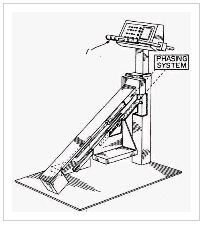
Nautilus's uphill climb to avoid patent infringement may
have gotten a bit easier yesterday in view of the U.S. Supreme
Court's decision in Nautilus, Inc. v. Biosig Instruments,
Inc. The U.S. Supreme Court found that the test previously
used to validate alleged infringement patent claims of Biosig,
based on claim ambiguity, improper. Ironically, the reason that the
Supreme Court found the previous test for patent claim invalidity
(based on claim ambiguity) improper was that the test, itself, was
ambiguous. The new test finds that a patent is invalid for
indefiniteness if its claims, fail to inform, with "reasonable
certainty", those skilled in the art about the scope of the
invention. This opens the door for Nautilus to (again) challenge
the validity of the alleged infringed patent claims under this new
test. If successful, Nautilus can avoid patent infringement by
invaliding the alleged infringed claims based on the patent claims
being insufficiently clear (i.e.vague and indefinite under 35
U.S.C. §112, second paragraph).
In the patent suit at issue in this case, Biosig had accused
Nautilus of infringing one of its patents. Nautilus responded by
asserting that the alleged infringed patent claims were
insufficiently clear (e.g. vague and indefinite) and thus the
alleged patent claims are invalid. Although Nautilus was successful
at the district court level in invalidity the patent claims, on
appeal by Biosig, the Federal Circuit reversed the district court
and found the patent claims were not indefinite and the claims were
sufficiently clear based on a test which includes determining if
the claims are "amenable to construction" or
"insolubly ambiguous". The U.S. Supreme Court found the
Fed. Circuit's test improper.
The U.S. Supreme Court's rationale for finding the test
improper was that the test "tolerates some ambiguous claims
but not others." As a result, the Supreme Court determined
that the prior test would find some patent claims valid even though
there is uncertainty as to the exact meaning of the patent claims.
The Supreme Court said that this scenario is inconsistent with the
statutory requirement that patent claims be sufficiently definitive
to provide the public (including those skilled in the art)
"reasonable certainty" of the scope of the invention. If
not, the Court reasoned, the public would not have sufficient
notice of the scope of a patent, and thus not have sufficient
knowledge to avoid patent infringement.
Unlike prior Supreme Court patent cases, the Court announced a new
test for determining patent claim definiteness. The new test finds
a "patent is invalid for indefiniteness if its claims, read in
light of the specification delineating the patent, and the
prosecution history, fail to inform, with reasonable certainty,
those skilled in the art about the scope of the
invention."
For patent practitioners, the take home lesson from this decision
is to draft patent claims and patent specifications with sufficient
disclosure to ensure patent claims are definitive and not
ambiguous, so that the public, and in particular, those skilled in
the art, will have "reasonable certainty" of the scope of
the patent claims. In order to satisfy a balance between
intentionally having broad patent claims to cover many different
embodiments, the use of dependent claims directed to specific
embodiments may help ensure that at least some patent claims
survive an indefiniteness challenge. Further, including many
different embodiments in the patent specification may provide the
public with reasonable certainty of the scope of the patent
claims.
Finally, announcing a test is a departure from some prior U.S.
Supreme Court patent cases, e.g. Bilski v. Kappos. Often the Supreme Court
remands patent cases back to the Federal Circuit to develop a test
based on its instructions in its opinion. This may signal a change
in the Court and may mean that the Court will be more active in
establishing its own tests rather than relying on the Federal
Circuit to develop tests, later confirmed or found invalid by the
Supreme Court. Observers of the Supreme Court, including us here at
OP-IP anxiously await the decision in the other U.S. Supreme
Court intellectual property cases this term, including patent
cases, such as
Alice Corp. v. CLS Bank.
The content of this article is intended to provide a general guide to the subject matter. Specialist advice should be sought about your specific circumstances.
